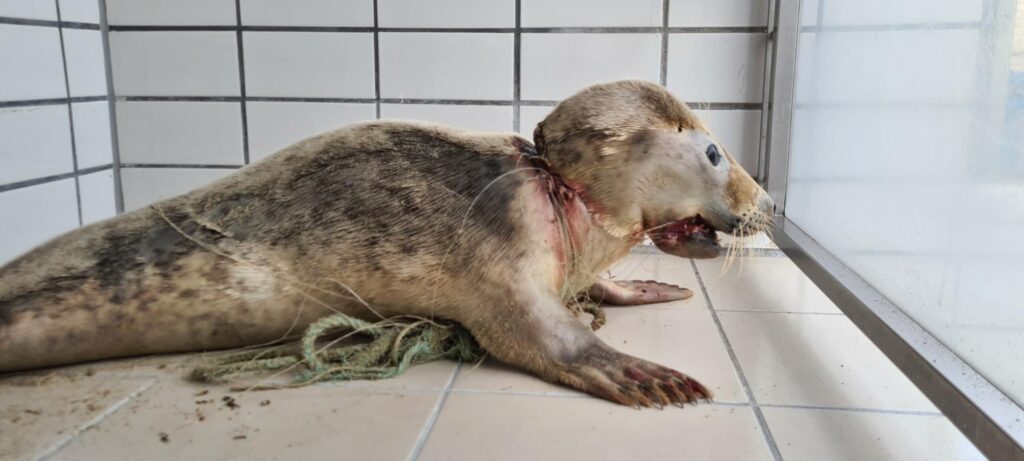Nylon The Seal Filmed Playing After Being Freed From Net That Almost Sliced Through His Jaw And Neck
The horrific injury suffered by this young male seal after an abandoned fishing net cut into his flesh is one of the worst ever seen by the conservationists who rescued him and who were convinced that he would not make it.
But as this video of him enjoying a fish in a shallow pool shows, the seal given the name Nylon has come back to life remarkably quickly, and his rescuers are optimistic that he might now eventually be released back into the wild.
Staff from Ecomare, a museum, aquarium and animal rescue centre in the town of De Koog on the Dutch island of Texel, found the seal on the beach on the morning of Monday, 9th August.

They had gone to the scene after a passerby spotted the animal on the sand caught in the net and alerted the centre.
The staff brought the animal back to their shelter, and, with the help of a vet, they freed it from the net.
It had suffered a deep cut to its neck, which is visible in the video filmed by the staff, and the corners of its mouth were torn.

The seal was found to be a 66-pound young male born last winter. Daphna Lavy of Ecomare told Newsflash: “The seal is called Nylon, and he is doing well.
“We are still not certain that he will survive, but we are hopeful. He eats by himself, that is great news…
“The vet gave him injections with antibiotics and painkillers and sprayed the wounds (with disinfectant).”

According to the staff at Ecomare, the seal must have been entangled in the net for a long time, and as it grew, the rope would have cut deeper and deeper into its flesh.
Daphna told Newsflash: “We have had similar cases, but not this severe.”
According to the environmental action group Sea Shepherd, the “single biggest single source of plastic choking out the life in our oceans is made up of purposefully or accidentally lost, discarded, or abandoned fishing nets, ropes, FADs (fish aggregating devices), long lines, and plastic fishing crates and baskets”.

In a report on abandoned nets, they wrote: “Approximately 46 per cent of the 79 thousand tons of ocean plastic in the Great Pacific Garbage Patch is made up of fishing nets, some as large as football fields”.
The information was provided in the March 2018 issue of Scientific Reports, and it shocked the researchers themselves, who expected it to be closer to 20 per cent.
Sea Shepherd continued: “Fishing nets lost, abandoned or discarded at sea – also known as ‘ghost nets’ – can continue killing indiscriminately for decades and decades, entangling or suffocating countless fish, sharks, whales, dolphins, sea turtles, seals and marine birds every year. An estimated 30 per cent of the decline in some fish populations is a result of discarded fishing equipment, while more than 70 per cent of marine animal entanglements involve abandoned plastic fishing nets.”



